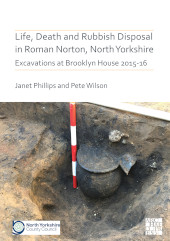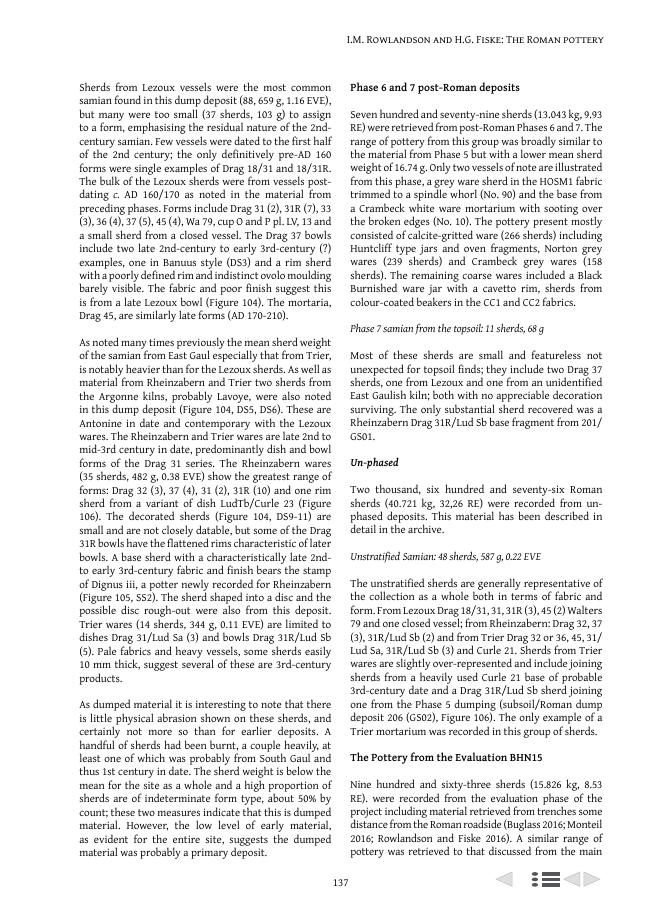2021 - Archaeopress Publishing
E-book
Digital Version
Download | Copy/paste | Printing
Life, Death and Rubbish Disposal in Roman Norton, North Yorkshire : Excavations at Brooklyn House 2015-16
283 p.
- Life, Death and Rubbish Disposal in Roman Norton, North Yorkshire: Excavations at Brooklyn House 2015-16 reports on excavations in advance of the development of a site in Norton-on-Derwent, North Yorkshire close to the line of the main Roman road running from the crossing point of the River Derwent near Malton Roman fort to York (Eboracum). The Brooklyn House site provided much information on aspects of the poorly understood 'small town' of Delgovicia. The area came to be used for apparently widely-dispersed burials in the mid-3rd century AD. Among these was the bustumtype burial of a soldier, or former soldier, which produced a well-preserved assemblage of military equipment and incorporated some 'non-standard' features. In addition, evidence was found for a possible mausoleum. During the late third and fourth centuries the burial activity was succeeded by occupation in the form of substantial stone-founded, or in some cases possibly stone-built buildings fronting onto the Roman road which was the main appro
- ach road to the town from the south. These structures could have been related in some way to the Norton Roman pottery industry, the core area of which was located to the east of the site, although no evidence from them suggested this. Following the fairly short-lived occupation, much of the site was used for the disposal of large quantities of rubbish and structural debris that presumably originated from locations closer to or beyond the river crossing, including possibly the Roman fort. The Roman pottery assemblage incorporated in excess of 21,000 sherds and adds considerably to our knowledge of pottery use and production in Roman Malton/Norton. Similarly, the substantial and well-preserved Roman-period finds assemblage provides insights, not only into the bustum burial but also wider aspects of life in Delgovicia. Within the assemblage, there were some unusual and rarely found individual items such as a pair of iron-working tongs, a two-link snaffle bit and a bone needle case, as well as a wide range of oth
- er material including military equipment, jewellery, styli and a possible scroll holder. The medieval and later pottery from the site provides a baseline for work on assemblages recovered from Malton/Norton in the future. [Publisher's text].
-
Information
ISBN: 9781789698398



